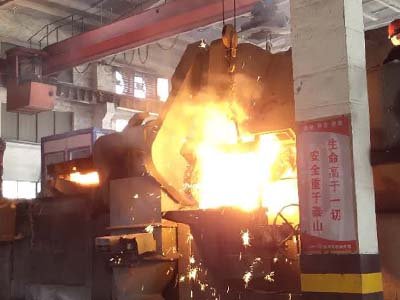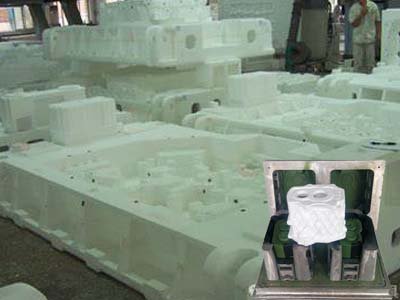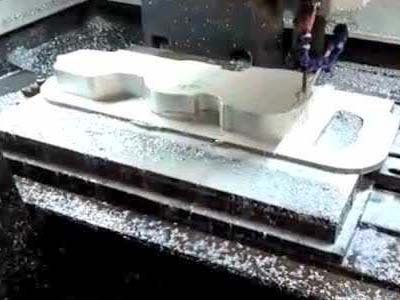I. Introduction
In the vast field of modern casting technology, lost foam casting (EPC) is gradually emerging with its unique process principle and remarkable technical advantages. With the increasing demand for high-precision, high-quality, and environmentally friendly casting processes in the manufacturing industry, lost foam casting conforms to this development trend, showing strong vitality and broad application prospects. However, like any technology, it also has its specific scope of application and limitations. In-depth understanding of the main characteristics of lost foam casting is of great significance for correctly selecting and applying this process and promoting the technological progress and sustainable development of the casting industry.
II. Characteristics of High Precision and Near-Net Shape Forming
(I) Principle of Precision Forming without Allowance
Lost foam casting uses foam plastic to make patterns. When this material comes into contact with the molten metal, it will quickly vaporize and disappear, thus realizing a casting process without parting surfaces and cores. The unique properties of the foam pattern make it unnecessary to consider the draft angle during the casting forming process, effectively avoiding the dimensional deviation caused by the draft angle. At the same time, since there is no combination of parting surfaces and cores, the dimensional errors caused by factors such as uneven parting surfaces and core offsets in traditional casting are reduced, enabling more precise dimensional control.
(II) Excellent Dimensional Accuracy and Surface Quality
Dimensional Accuracy Reaching IT5 - IT7
In actual production, through precise mold manufacturing and strict process control, lost foam casting can stably control the dimensional accuracy of castings within the range of IT5 - IT7. For example, in the casting of automotive engine parts such as cylinder blocks and cylinder heads, the use of lost foam casting process can ensure the accuracy of each key dimension, guarantee the precise assembly between parts, and improve the overall performance of the engine.
Surface Roughness Ra = 6.3 - 12.5μm
Its surface roughness is close to that of investment casting, which can meet the application scenarios with relatively high requirements for surface quality. Taking some small structural parts in the aerospace field as an example, lost foam casting can provide a relatively smooth surface, reducing subsequent processing procedures and production costs, while ensuring the performance reliability of the parts in complex environments.
(III) Improvement of Casting Defects
Elimination of Traditional Casting Defects
Lost foam casting uses dry sand as the molding material, completely eliminating the defects caused by moisture, binders, and additives. In traditional green sand casting, the presence of moisture may lead to defects such as pores and sand inclusions; improper use of binders may cause problems such as sand sticking on the casting surface and insufficient strength. Lost foam casting avoids the influence of these factors and significantly improves the casting quality
Reduction of Rejection Rate
Due to the reduction of multiple sources of defects, the rejection rate of lost foam casting has dropped significantly. In some large-scale casting enterprises, after adopting the lost foam casting process, the rejection rate can be reduced from a relatively high level of traditional casting methods to a lower level, effectively improving production efficiency and economic benefits.
(IV) Operational Simplicity
Relatively Low Requirement for Workers' Operational Level
Compared with some traditional casting processes, the operation process of lost foam casting is relatively simple. Workers do not need to perform complex parting and pattern removal operations, and the technical difficulty brought by core installation and other links is also reduced. This makes enterprise personnel training and production management more convenient, reduces the dependence on highly specialized skills of workers, and is conducive to attracting more labor in the casting industry and promoting the development of the industry.
III. Characteristics of Environmental Protection and Clean Production
(I) Environmental Protection of Raw Materials
Harmlessness of Polystyrene (EPS) at Low Temperature
The EPS foam plastic used in lost foam casting is chemically stable at room temperature and completely harmless to the environment at low temperatures. This means that during the storage, transportation, and non-pouring stages of production, EPS will not cause pollution to the environment, reducing the potential risk to the environment.
Low Organic Emissions during Pouring
During the pouring process, the amount of organic substances discharged by the vaporization of the EPS foam pattern is extremely small, accounting for only 0.3% of the mass of the poured molten iron. In contrast, the organic emissions of self-hardening sand are 0.5%. This low-emission characteristic helps to reduce the pollution of the casting process to the atmospheric environment and meets the requirements of modern environmental protection regulations for industrial production.
(II) Easy Treatment of Organic Emissions
Centralized Emission and Easy Collection
The generation time of organic emissions in the lost foam casting production process is short and the location is concentrated, mainly concentrated at the moment of pouring. This enables enterprises to adopt relatively simple and efficient collection devices, such as local exhaust systems, to effectively collect organic emissions and prevent them from spreading to the entire production workshop.
Negative Pressure Suction Combustion Purification Treatment
The collected organic emissions can be treated by negative pressure suction combustion purification treatment technology. During the high-temperature combustion process, organic substances are completely oxidized and decomposed into harmless substances such as carbon dioxide and water. After purification treatment, the combustion products are harmless to the environment, achieving the goal of reducing pollutant emissions from the source and conforming to the concept of clean production.
(III) High Reuse Rate of Used Sand
Advantages of Used Sand Reuse
The reuse rate of used sand in lost foam casting is as high as more than 95%, which is an important manifestation of its environmental protection and economy. The used sand can be reused for molding after simple treatment, greatly reducing the demand for new sand and the pressure on natural resource exploitation. At the same time, it reduces the emission and treatment costs of waste sand and is of great significance for the sustainable development of casting enterprises.
Comparison with Traditional Casting Methods
Traditional casting methods such as clay sand casting and resin sand casting have relatively low reuse rates of used sand, require a large amount of new sand supplementation, and have great difficulty in waste sand treatment. Lost foam casting has obvious advantages in the reuse of used sand and can effectively reduce raw material costs and environmental burdens in the long-term production process.
(IV) Improvement of Labor Environment and Reduction of Labor Intensity
Reduction of Hazard Factors
Compared with traditional casting processes, lost foam casting significantly reduces hazards such as noise, carbon monoxide gas, and silica dust. In traditional casting workshops, operations such as molding and shakeout will produce relatively large noise, the cupola melting process will produce a large amount of carbon monoxide gas, and the sand treatment process will produce silica dust, posing a serious threat to the health of workers. Lost foam casting effectively reduces the generation of these hazard factors through measures such as dry sand molding and centralized pouring.
Reduction of Labor Intensity and Automation Potential
The operation process of lost foam casting is relatively simple, reducing the physical labor intensity of workers. For example, in the molding process, there is no need to perform heavy operations such as compacting the sand mold as in traditional casting. At the same time, this process is easy to realize mechanized and automated production. For example, the adoption of automated molding lines and pouring systems can further improve production efficiency, reduce human intervention, improve the labor environment, and lay the foundation for casting enterprises to achieve intelligent production.
IV. Characteristics of Design Freedom and Cost Advantage
(I) Overall Casting of Complex Structures
Piecewise Pattern Making and Overall Casting
Lost foam casting provides unprecedented design freedom for main structure design. For complex components that originally required multiple parts to be processed and assembled, they can now be integrally cast by piecewise pattern making and then bonding. For example, in the manufacturing of complex frame structures of some large mechanical equipment, lost foam casting can integrate multiple parts into a single casting, reducing the connection links between parts, improving the integrity and strength of the structure
Core Omission and Direct Casting of Holes
This process can omit the use of cores. For some castings with internal hole structures, the holes can be directly formed during the casting process. This not only simplifies the casting process but also avoids defects caused by improper core setting. For example, in the casting of engine cylinder blocks with complex internal cooling channels, lost foam casting can directly cast the cooling channels without the need for subsequent processing, improving production efficiency and product quality.
(II) Multi-faceted Cost Reduction
Saving of Machining and Assembly Costs
Due to the ability to achieve the overall casting of complex structures, the machining and assembly processes of parts are reduced, thus greatly saving machining and assembly costs. In the automotive manufacturing industry, after some parts adopt lost foam casting, the machining hours and assembly workload are reduced, lowering the production cost. At the same time, the possible waste products generated during the machining and assembly of parts are reduced, further improving economic benefits.
Reduction of Equipment Investment
Generally speaking, compared with traditional casting processes, the equipment investment of lost foam casting technology can be reduced by 30% - 50%. This is because lost foam casting does not require complex parting equipment, pattern removal equipment, and core manufacturing equipment. For example, when building a new casting workshop, adopting the lost foam casting process can reduce equipment procurement costs, shorten the construction period, and enable enterprises to put into production faster and improve market competitiveness.
Decrease of Casting Cost
Considering the above factors, lost foam casting can reduce the casting cost by 10% - 30%. This includes the reduction of raw material costs (such as used sand reuse), the decrease of machining costs, and the reduction of equipment depreciation and maintenance costs. In today's increasingly fierce market competition, the decrease of casting cost provides enterprises with greater profit margins and also makes lost foam casting have stronger economic advantages among many casting processes.
V. Summary and Outlook
Lost foam casting occupies an important position in the modern casting industry with its remarkable characteristics such as high precision, environmental protection, high design freedom, and cost advantage. Its precision forming process without allowance can produce castings with high dimensional accuracy and good surface quality, approaching the level of investment casting; its environmental protection characteristics meet the pursuit of green manufacturing in today's society and perform well in aspects such as raw material use, emission treatment, and used sand reuse; the design freedom it provides breaks the limitations of traditional casting and realizes the overall casting of complex structures, reducing costs.
Looking forward to the future, with the continuous development of materials science, automation technology, and intelligent manufacturing concepts, lost foam casting is expected to make further breakthroughs in the following aspects. In terms of materials, more environmentally friendly and excellent performance foam plastic materials will be developed to improve the strength and vaporization characteristics of patterns and further optimize the casting process. In terms of process automation and intelligence, combined with industrial Internet, big data, and artificial intelligence technology, the precise control of the casting process, quality prediction, and production optimization will be realized, improving production efficiency and product quality stability. In terms of application field expansion, with the increasing demand for high-precision and complex structure castings, lost foam casting will play a greater role in high-end manufacturing industries such as aerospace, automotive manufacturing, and medical devices, promoting the technological progress and product innovation of these industries. At the same time, with the increasingly strict environmental protection regulations, the environmental protection advantages of lost foam casting will increase its proportion in the casting industry and lead the casting technology to develop in a more green, efficient, and intelligent direction. In short, lost foam casting, as a casting process with great potential, will continue to show its unique charm in modern manufacturing and make greater contributions to industrial development.
EATHU fully utilizes the design freedom advantage of lost foam casting to provide customized solutions for customers. Its design team closely cooperates with customers, conducts innovative design according to customers' special needs, and successfully manufactures multiple complex structure integral castings by using piecewise pattern making and overall casting technology, saving a large amount of machining and assembly costs for customers. For example, in the field of energy equipment manufacturing, the large complex structure casting customized by EATHU for customers reduces the number of parts, improves the overall performance and reliability of the equipment, and lowers the manufacturing cost through optimized design and lost foam casting process.
In terms of cost control, EATHU further reduces the cost of lost foam casting by optimizing the production process, improving equipment utilization rate, and supply chain management. Its advanced automated production equipment and intelligent management system improve production efficiency, reduce labor costs and production cycle. At the same time, by establishing long-term cooperative relationships with high-quality suppliers, it ensures the stable supply of raw materials and cost control. This enables EATHU to provide customers with more competitive prices while ensuring product quality and help customers enhance market competitiveness.







